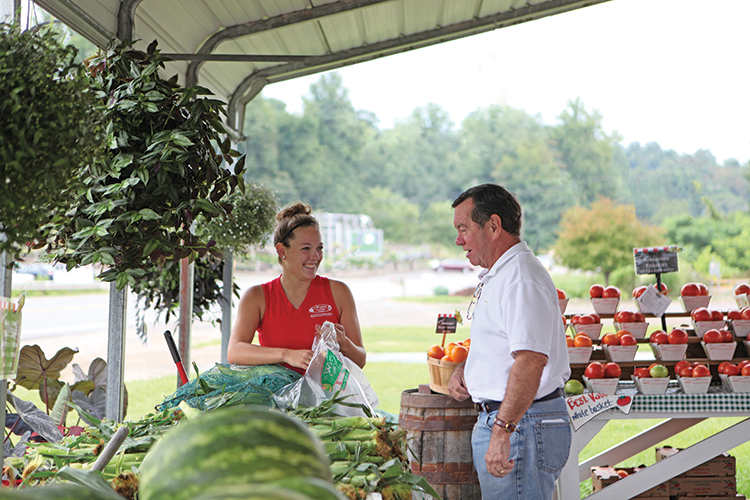Home > Ohio > Ohio Farm to Table > Keeping Ohio’s Food Safe
Keeping Ohio’s Food Safe
In partnership with: Ohio Department of Agriculture
 The Ohio Department of Agriculture Division of Food Safety works daily to ensure the quality and security of what Ohioans are eating. The Division of Food Safety works in unison with the Food and Drug Administration, U.S. Department of Agriculture and local health departments to guarantee food processors, food warehouses, grocery stores, restaurants, farmers markets and farm markets are providing safe, wholesome food.
The Ohio Department of Agriculture Division of Food Safety works daily to ensure the quality and security of what Ohioans are eating. The Division of Food Safety works in unison with the Food and Drug Administration, U.S. Department of Agriculture and local health departments to guarantee food processors, food warehouses, grocery stores, restaurants, farmers markets and farm markets are providing safe, wholesome food.
The Division of Food Safety is responsible for inspecting all food-processing facilities – with the exception of meat and dairy – and all food warehouses in the state of Ohio.
“When we inspect a facility,we are looking for general sanitation, proper handling of food and verifying they are processing food in a safe manner,” says Terri Gerhardt, chief of the Division of Food Safety.
Inspectors also look at time and temperature constraints in handling and storing food, good employee hygiene and ensuring there is no cross-contamination with raw food and allergens. They look at everything from the physical building to its employees to its management, Gerhardt says.
The local health departments license and inspect grocery stores and restaurants. Plus, the Division of Food Safety and local health departments inspect farmers markets in Ohio. Farmers markets are held to the same rules that regulate grocery stores and restaurants, Gerhardt says.
“Farmers market vendors must offer for sale food that is from approved sources, which means it has been inspected.” This allows vendors to sell whole, undamaged produce and cottage foods, or foods made in a person’s home. “This ensures that consumers are only buying good, wholesome food at the market.”
The Ohio Department of Agriculture handles almost all food in the state from its production on the farm to the end of the line when the consumer picks it up. “We take very seriously our role to protect the health of our consumers,” Gerhardt says.
Gerhardt provides a few tips for people selecting produce or locally packaged goods:
- When shopping for produce at farmers markets, Gerhardt says, “Just select fresh-looking fruits and vegetables.”
- When purchasing cottage foods – items produced in someone’s home, such as jams – look for items that are presented in a clean and professional manner. Don’t buy something where the packaging looks old or worn.
“I tell people selling these items: Package things the way you would want to buy them,” Gerhardt says.
- Look at the overall presentation of items on the shelf when shopping. Pick a vendor that takes pride in all of its products and presentation.
“Stores employ trained people to check for freshness on the shelf and remove items that are no longer up to standards,” Gerhardt says.



